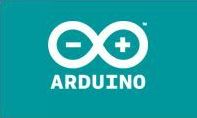Main menu
You are here
Arduino
[last updated: 2022-02-27]
Arduino IDE install & upgrade
Arduino boards available
programming the board (uploading)
Arduino upload errors
Arduino IDE programming
Installing Contributed Libraries
(link to:) Arduino forum
Generic Presentation for Microcontrollers
serial plotter
-----
Introduction:
- The Arduino is an open-source (ie. DIY) micro-controller. Here's the wiki for history etc.
- It is so flexible, so easy to learn and use, and so inexpensive, that it's just very cool. The very active user community, with resources and forum, is here: www.arduino.cc
- A microcontroller has inputs and outputs. Some are digital, on or off, and others are analog, varying from zero to +V.
Input sources for example might be switches, temperature sensors, photo sensors, cameras or video sources, microphones, etc.
Outputs for example might be lights, buzzers, speakers, solenoids, motors, video streams, etc.
You can see how the possibilities quickly become as infinite as a chess game. - If you have an electrical signal, or some real-world parameter that can be converted to an electrical signal, you can monitor and control it with a microcontroller.
- For a more complete presentation of what a microcontroller is, go here:
----------------------
Getting Started:
- Get an Arduino board:
- There are dozens to pick from. They differ in the specific microprocessor used, the clock speed, the number of I/O, some have wifi built in, etc.
Google "Arduino board comparisons" to get an overview. - Pick one that has the capabilities for what you want to do with it.
- Buy from Amazon, Adafruit, Sparkfun, direct from arduino.cc, or any number of other sources.
- There are dozens to pick from. They differ in the specific microprocessor used, the clock speed, the number of I/O, some have wifi built in, etc.
- Regardless of which board you get, they are all programmed with the same software.
- Install Arduino IDE:
- Open IDE
- Open previously edited sketch, or save-as to create a new one from the default BareMinimum program
- Edit program as desired
The Arduino IDE uses code and programming protocol that is a derivation of C++
It's very easy to learn and there are lots of tutorials and other helpful sites online.
I'm especially fond of the arduino.cc Resources > Reference pages. Very helpful cheat sheets for all the commands/statements. - Upload to Arduino
- Watch it run
----------------------
.
.
.
eof
